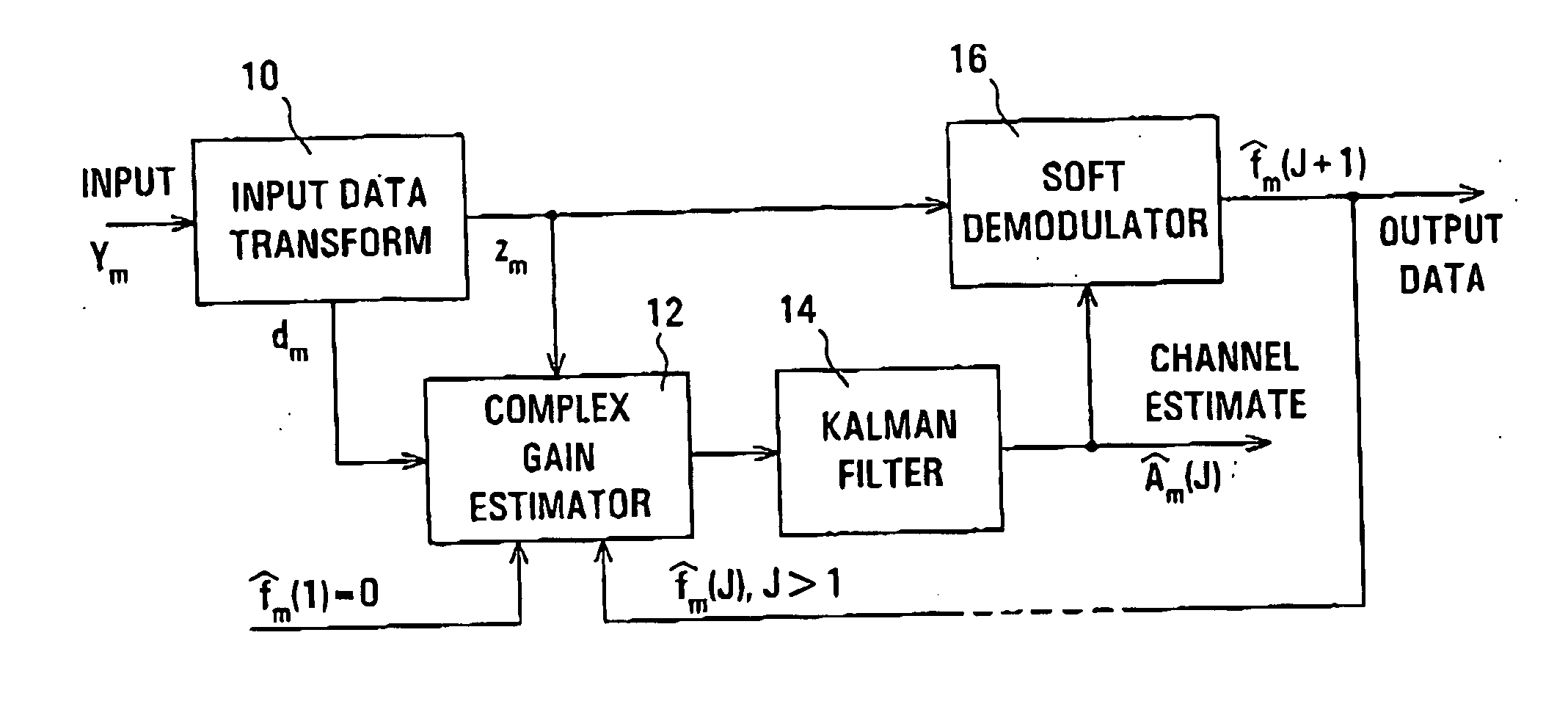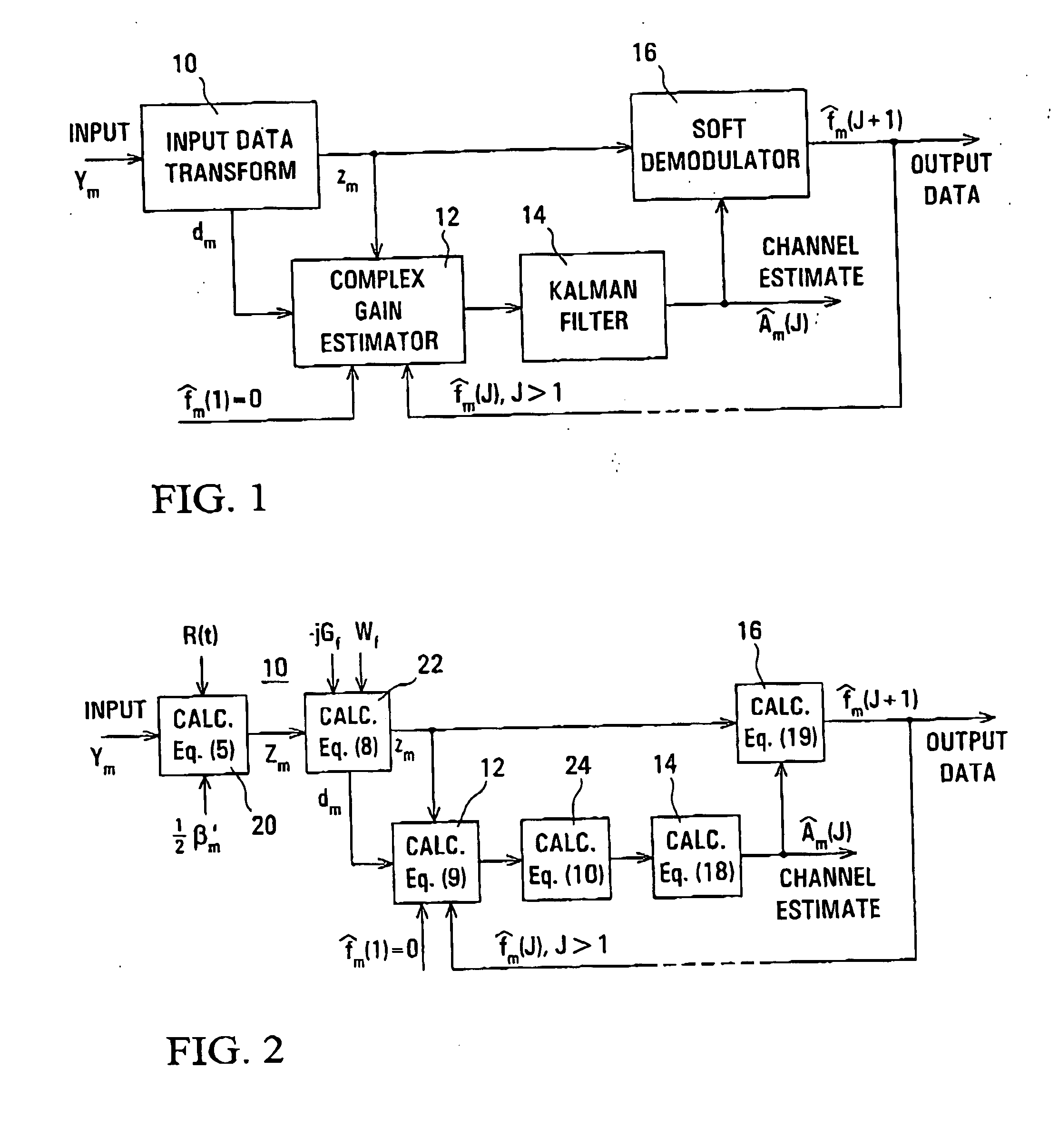Channel estimation in cdma communications systems using both lower power pilot channel and higher power date channel
a communication system and channel estimation technology, applied in the field of channel estimation in cdma communications systems using both lower power pilot channel and higher power date channel, can solve the problems of poor phase accuracy, poor amplitude tracking, and substantial challenge of accurate channel estimation in cdma systems, and achieve the effect of improving the estimated complex gain of communications channels
- Summary
- Abstract
- Description
- Claims
- Application Information
AI Technical Summary
Benefits of technology
Problems solved by technology
Method used
Image
Examples
Embodiment Construction
[0019] Referring to the drawings, an embodiment of the invention is initially described with reference to FIG. 1, which is a block diagram illustrating a channel estimation and data demodulation arrangement for use in a base station of a CDMA system. The arrangement comprises an input data transform unit 10, a complex channel gain estimator 12, a Kalman filter unit 14, and a soft demodulator 16, and operates iteratively as described below.
[0020] The unit 10 provides a transformation of a vector Ym of complex input data samples to scalar complex numeric sequences zm and dm. which are supplied to the estimator 12. The estimator 12 produces a complex gain estimate which is filtered by the Kalman filter unit 14 to produce a channel estimate Âm(J) where J=1, 2, . . . is an iteration number. The transformation of the input data by the unit 10 enables the estimator 12 to produce the complex gain estimate without any vector-matrix operations.
[0021] The soft demodulator 16 demodulates the ...
PUM
 Login to View More
Login to View More Abstract
Description
Claims
Application Information
 Login to View More
Login to View More - R&D
- Intellectual Property
- Life Sciences
- Materials
- Tech Scout
- Unparalleled Data Quality
- Higher Quality Content
- 60% Fewer Hallucinations
Browse by: Latest US Patents, China's latest patents, Technical Efficacy Thesaurus, Application Domain, Technology Topic, Popular Technical Reports.
© 2025 PatSnap. All rights reserved.Legal|Privacy policy|Modern Slavery Act Transparency Statement|Sitemap|About US| Contact US: help@patsnap.com



